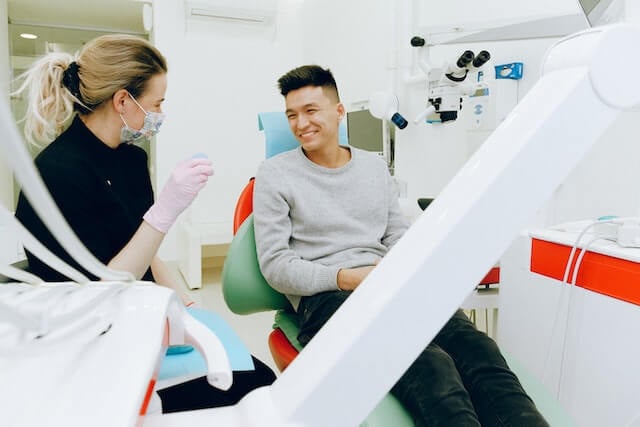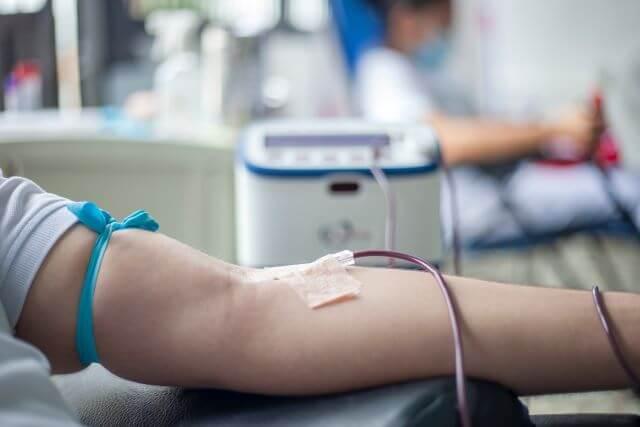Celebrate National Blood Donor Week 2023
National Blood Donor Week takes place from 12 to 18 June, and we’re going to mark the occasion here in our latest post.

It’s your chance to find out more about blood, how you can donate and why wearing a wristband with your blood type could help you in a medical emergency.
What is National Blood Donor Week 2023 all about?
First and foremost, National Blood Donor Week is a chance to say thank you to Australia’s blood donors — there are over half a million of them!
It’s also an opportunity to raise awareness of the need to donate blood, plasma and platelets to help Australians in need.
There are lots of things you can do to celebrate the week. Why not try:
- Donating blood for the first time — check out your eligibility here
- Making an appointment to donate blood during the week, if you’re an established donor
- Sharing posts and pictures about National Blood Donor Week on social media, using the hashtags #nationalblooddonorweek, #donateblood, #lifeblood and #australianredcross
World Blood Donor Day takes place during the week, on Wednesday, 14 June. This is a day to give thanks to blood donors around the world and highlight the need for safe blood transfusions for everybody, no matter where they are.
Why donate blood?
Donating blood means you can save lives or help people having treatment for long-term conditions. For example, donated blood is used:
- In surgery like organ transplants and emergencies
- In childbirth
- To treat conditions like anaemia, cancer and blood disorders
- To help improve the quality of life for terminally ill people
It’s not just blood that’s useful. You could also choose to donate plasma, a liquid that contains a range of nutrients, or platelets, cell fragments that help control bleeding, to help sick people.
Donated plasma can help with diseases like haemophilia and hepatitis B, while platelets can be used during surgery and to treat rare blood conditions.
What about blood types?
When you get a blood transfusion, the blood must work with your own blood type.
The eight main blood types are:
- O positive
- O negative
- A positive
- A negative
- B positive
- B negative
- AB positive
- AB negative
O positive is the most common blood type in Australia and is given the most, as its red blood cells are compatible with those in other positive blood types.
The rarest blood type is AB negative — but that’s not a bad thing, as plasma from this blood type can be given to anyone.
Some people like to wear a medical ID to show their blood type, particularly if they have a type that can only be matched with one or two others — for example, O negative, which is only compatible with the same type.
This means that if they need blood in an emergency situation, health professionals can get the information they need to do this safely and without delay.
So for peace of mind this National Blood Donor Week, why not get a medical alert bracelet customised with the details of your blood group?
Med alerts are also invaluable if you are living with a blood disorder, such as haemophilia, which means that you are at risk of severe bleeding.
As well as bracelets, you can include information about your blood type or health condition in an emergency information medical wallet card, which has plenty of space for info about your health and contact details too.
What happens when I donate blood or plasma?
When you arrive at your local blood donation centre, staff will check to ensure that it’s OK for you to give blood. They will also check your ID and do a fingerprick test to know your haemoglobin levels.

The whole appointment will take around an hour, although it takes only 10 minutes to donate.
After you’ve donated, you can relax with a drink and a snack to replenish your energy.
Donating plasma is just like donating blood. Blood is taken from your arm using a dedicated machine, which separates out the yellow plasma. The entire appointment should take around an hour and a half, with the donation itself taking 45 minutes.
Donating platelets takes a little longer — around two hours for the appointment, with one hour of that time taking up the donation.
Is it safe to donate blood?
Yes, it’s extremely safe to donate and receive blood in Australia!
The donation process follows a strict protocol to ensure that you’re suitable for donating blood, while the equipment is maintained to the highest standards.
Donated blood undergoes a rigorous process to screen for infectious diseases, and recipients are usually matched carefully for a compatible blood type.
The only exception to this would be if the recipient’s blood type was unknown in an emergency situation. They would most likely be given O positive or O negative, as the risk of reaction would be low.
Be inspired by blood!
Have you been inspired by what you’ve learnt about blood and blood donation?
If so, why not pledge to give blood at your local donation centre? Knowing that you could help save a life or provide relief to someone with a health condition is an amazing feeling!
You can also check out the Mediband range of medic alert IDs. They’re designed to give vital medical information in an emergency — for example, if you need a blood transfusion — and can be customised with your personal details.
This week is a great time to invest in your own customised medical ID bracelet…so take a look at our collection to find the perfect one for you.

